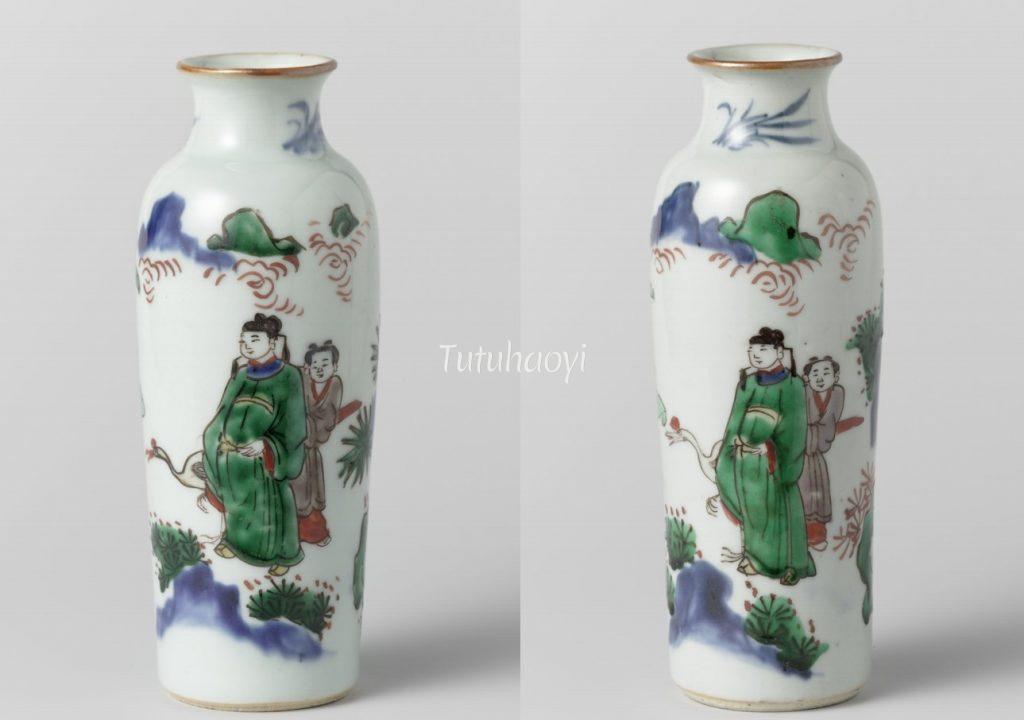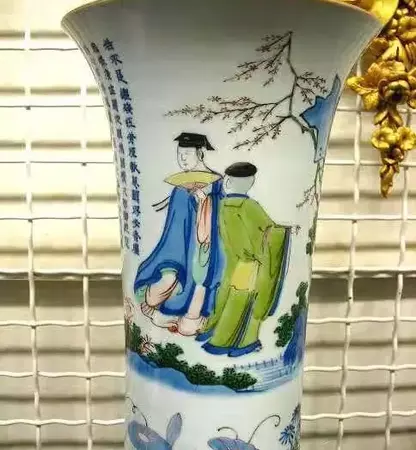Editor: Have you ever been puzzled by the description of ‘figural paintings’ for Chinese porcelains listed by various museums and auction catalogues? In fact, many Chinese paintings with figures refer to ancient stories and have meanings behind the scenes. We have invited Dr Yibin Ni to tell you an unusual story about an official and his pet crane presented on the following Chinese antiques.
image above: a pair of porcelain vases with underglaze blue and overglaze enamelled decoration, mid-17th century, courtesy of Rijksmuseum, Holland
In the collection of Rijksmuseum, Holland, there are two sleeve vases adorned with, according to the museum’s online catalogue, ‘a dignitary and his servant in a landscape’ in underglaze blue and overglaze enamels. The dignitary, however, is none other than the ‘incorruptible imperial censor (铁面御史 tie mian yu shi)’ Zhao Bian (赵抃, 1008-84), who was held in high esteem all his life and posthumously because of his incorruptibility and sound statesmanship during his entire official career. His prize possessions were legendarily well-known: a qin zither and two pets, a crane and a tortoise. They were inseparable from him wherever he was posted.
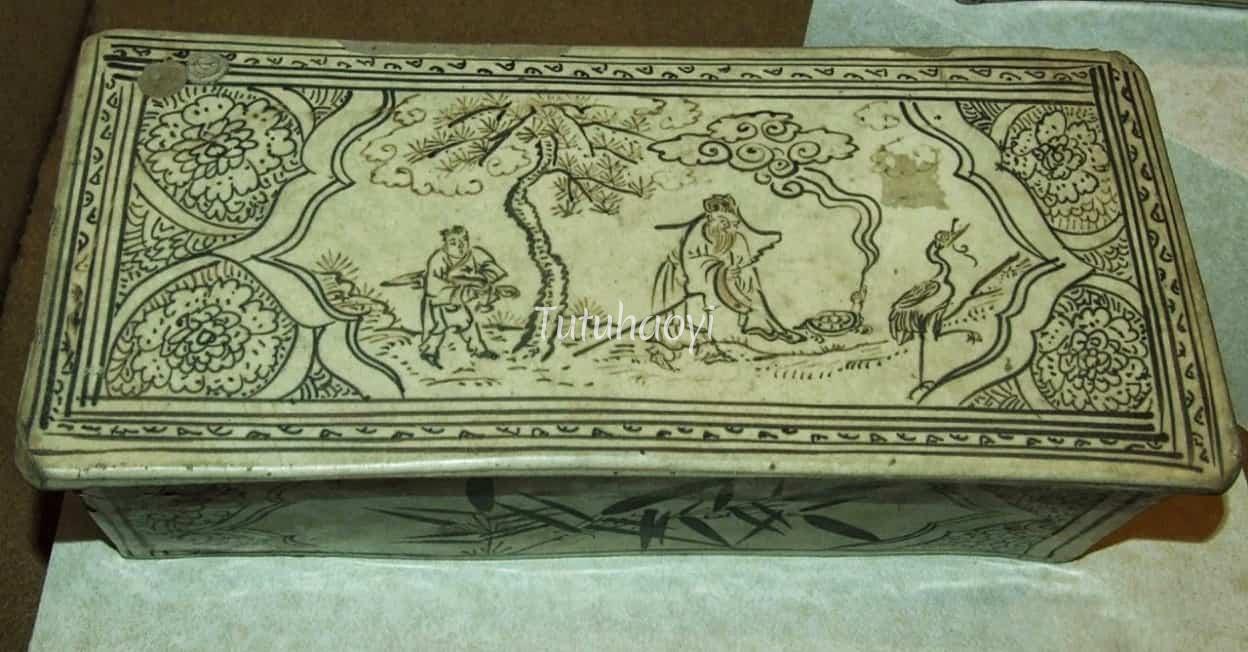
In the earliest depiction of Zhao Bian on ceramics, a Cizhou ware pillow fired in the Yuan dynasty (1271-1368), none of the details is missing: the crane taking the lead in proud long strides, the tortoise breathing visible positive qi energy, and Zhao Bian leaning on a dragon-head stick, followed by a page boy carrying his precious silk-wrapped qin zither. Though Zhao Bian seems to be a geriatric hobbling along a mountain path, his official hat with long, thin flaps indicates his high official rank. This full-fledged portrayal of Zhao Bian’s legendary fragility during his posting serves as a model for numerous later adaptations with fewer details.
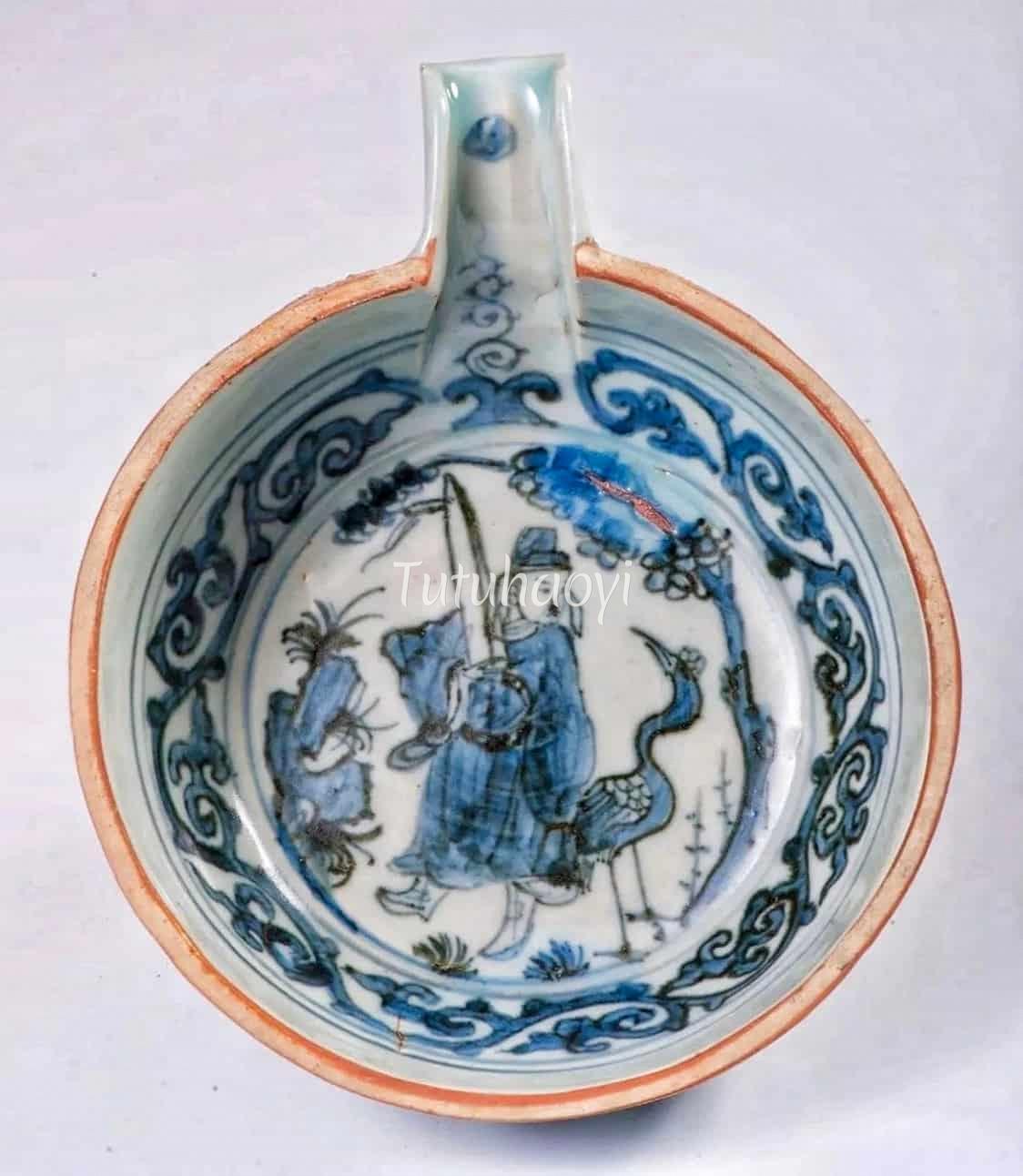
For example, in the centre of a Yuan-dynasty blue-and-white yi washer with a spout, Zhao Bian is portrayed as holding the qin zither with his two hands, accompanied by only the crane, dispensing with both his page boy and the pet tortoise.
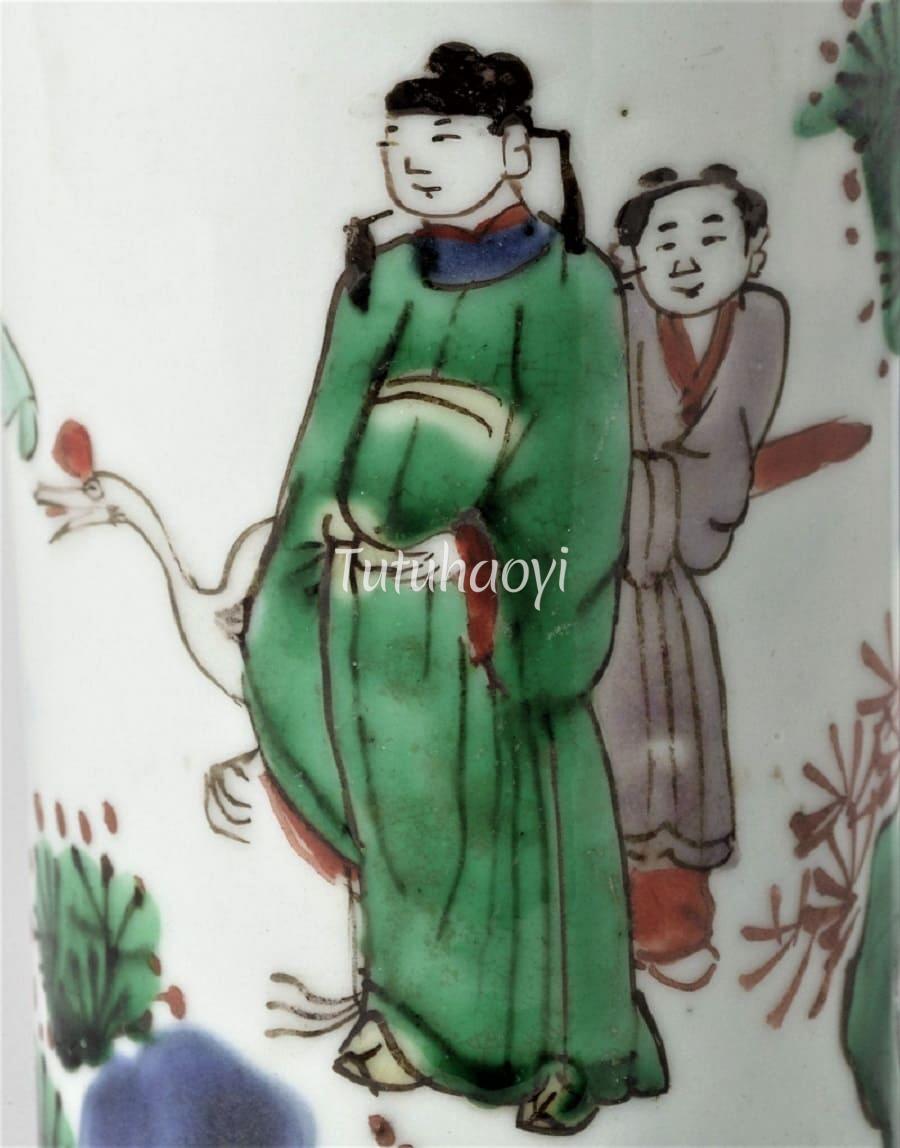
The Rijksmuseum sleeve vase gives back Zhao Bian’s page boy, making him do his job of taking care of the qin zither. However, the porcelain painter wanted to emphasise the characteristic of the red-crowned crane and made the flat red skin on the crown of the crane’s head erect, giving it a ridiculous look.

When it comes to porcelain sculpture, it is almost compulsory to make the form more condensed. As a result, the statue of Zhao Bian created by 17th-century Dehua porcelain sculptors is reduced to one man with a slim crane, which epigrammatically symbolises his lofty sentiments and deeds.


Some time during the years between 1064 and 1068, Zhao Bian was nominated as governor of Chengdu, which was a prosperous town contaminated by extravagant upper echelons. Zhao went there alone with his musical instrument and two pets without an entourage, as is depicted on the Cizhou pillow. In time, his good leadership made a name for himself and people of neighbouring areas moved to central Sichuan to seek better opportunities. Once he had an audience with the emperor in court, the emperor asked Zhao, ‘Did you really go to Sichuan alone with only a qin zither and a crane as they say?’ Zhao modestly kowtowed to the emperor to thank him for his recognition. Up till today, the saying ‘one qin zither and one crane (一琴一鹤)’ has been used to praise a virtuous official.
See related article Governor Zhao Bian’s Frugal Possessions: a Qin Zither and a Pet Crane in Figures & Stories section on our website.
The findings and opinions in this research article are written by Dr Yibin Ni.
